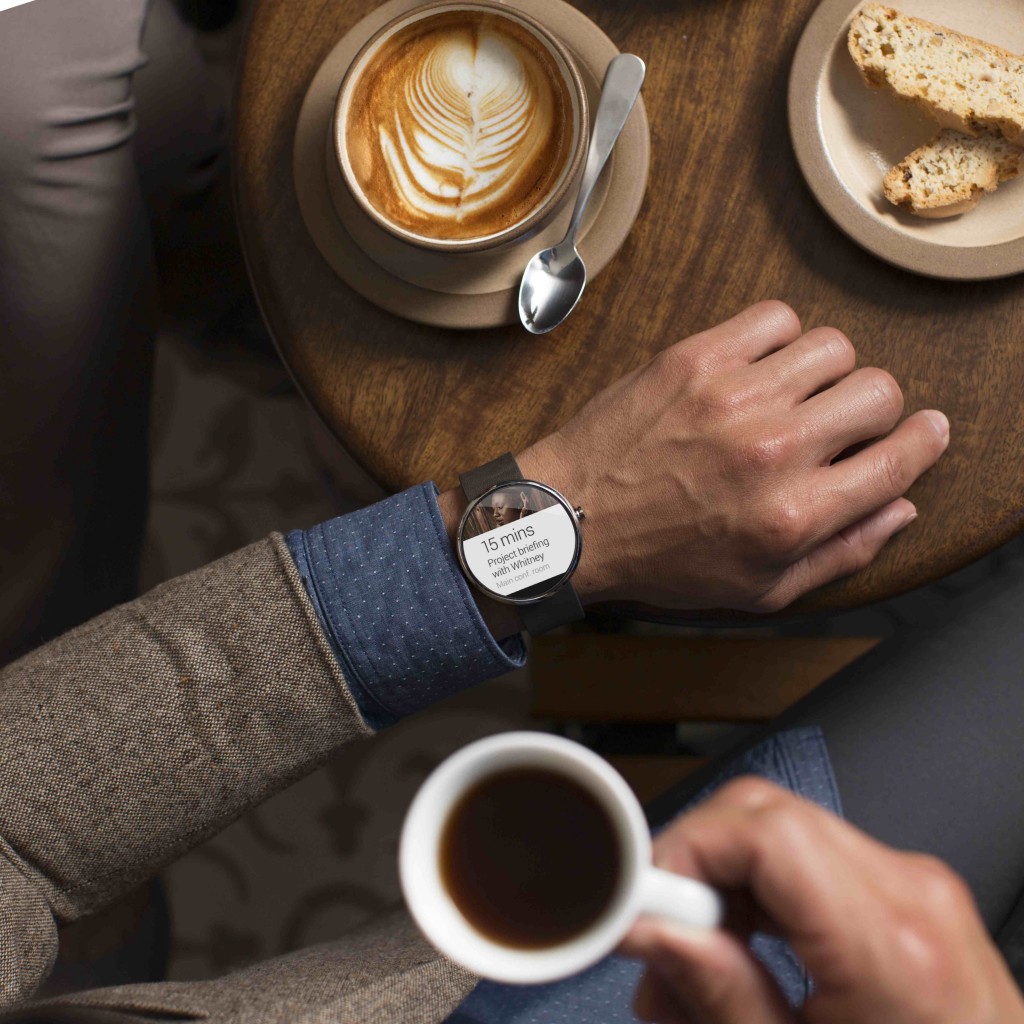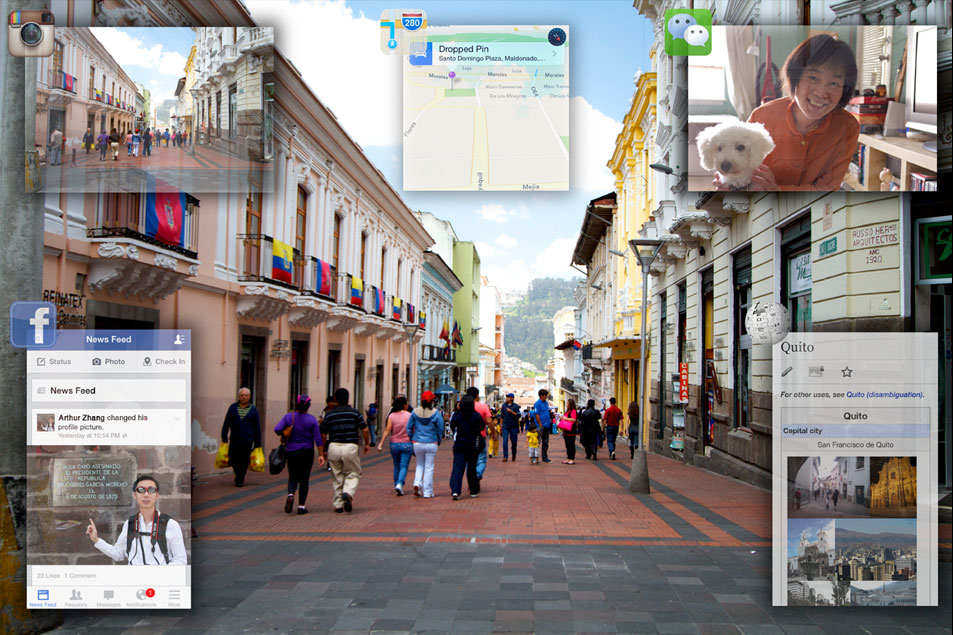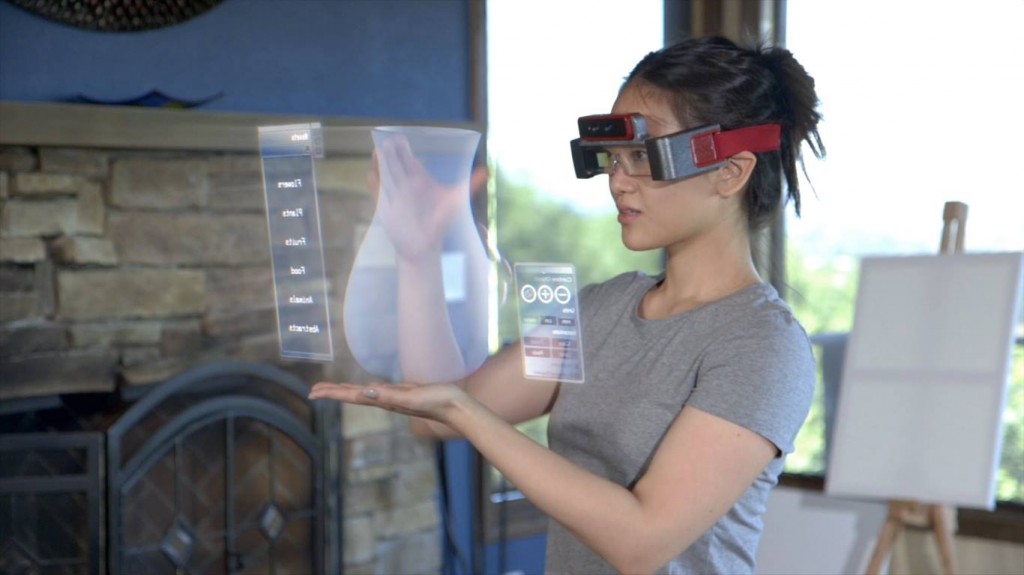
Remember how wearing a calculator watch back in the day made you feel like George Jetson or his boy Elroy? Technology has come a long way from spelling out naughty words (upside down) on your calculator. These days, you can make calls, record videos, check your health, and buy coffee from your smartwatch–and that’s just the beginning. With the advent of Google Glass, Android Wear, and the distant promise of Apple iWatch, the world is slowly getting comfortable with the idea of wearing technology, instead of holding it. This idea of wearing a computer will undoubtedly shift the way users interact with the internet and its design. Is your web design future proof?
What Exactly is Wearable Technology?
Wearable technology can be clothing or accessory items. Most wearable technology comes in the form of wrist wear or eyeglasses. It’s normally light-weight and unassuming. The most popular and accessible uses for wearable tech exist in the realm of fitness gadgets, such as Fitbit, and smartwatches, like Pebble. Google Glass has gotten a lot of attention but, at $ 1500 a pop, it’s cost prohibitive from most folks. That said, so was the iPod when it was first introduced. Eventually, a competitive marketplace will drive the price to a reasonable cost, and you’ll need to be ready when it happens.

Motorola’s Moto 360 uses Google’s Android Wear to create an interactive experience with your watch. Moto360.motorola.com
Why Should You, Web Designer, Care?
A lot of naysayers are quick to write off wearable technology as a fad, but a recent report from Pew Research Center Internet Project indicates that 83% of industry experts believe that wearable technology will see huge growth within the next 10 years. By 2025, we’ll be fully immersed in the Internet of Things (IoT). This means that users will be accessing websites from various platforms, not just desktops and mobile devices.
As technology expands and more users embrace wearables, more of your clients will want to their sites to be accessible. If you’re unprepared for such requests, clients will search elsewhere to fit their needs.
Although wearable technology is in its infancy now, it’s rapidly growing. Expect it to develop like a kid in puberty– overnight. All of the primitive functions of wearable tech are already in place– browsing, social media, instant messaging, camera, and video. As a web designer, your job will be getting rid of the pimples and awkwardness that comes along with pubescent technology. Like now, your future in wearable tech will consist of creating a beautiful and functional space that allows users to effectively access the information they care about.
Full-blown web design for wearable tech may be a ways off, but it’s not too early to start thinking about how this type of technology will inform your design decisions.
How Will Wearable Tech Impact Your Design?
There’s no doubt that wearable tech will impact your web design, the question is how. We can look at how the introduction of mobile technology, such as smart phones and tablets, challenged the web design community to create responsive language. In much that same way, the advent of wearable tech will cause designers to streamline and ruthlessly edit the superfluous.
Here’s 7 considerations for wearable tech web design:
1. Designs are responsive.
This cannot be emphasized enough. When I browse over mobile devices, I encounter a huge number of websites that aren’t optimized for mobile viewing. In 2014. According to a recent study performed by Restive Labs, only 3% of Fortune 1000 websites are responsive and fast. If they can’t get it right, you can imagine how most fair.
Currently, browser-capable wearable technology uses mobile viewports. Don’t wait to implement this meta tag into your web design.
2. Information is instant.
Wear techies (a term I made up, affectionately) want information immediately. Instant access is the whole point of wearing technology as opposed to putting it in your pocket. This means that your web design shouldn’t get in the way and slow the user’s access to information.
Why is the visitor on your website? Figure it out and plan your design around the answer. Once you get away from designing for design’s sake, and understand what’s most important to the visitor, you’ll be able to strip away elements or flaws in your design that slow down your site, or clutter the user’s path to information.
3. Interactivity is everything.
Wearable tech is a soft introduction into augmented reality. Take a look at the Innovega iOptik platform that will provide users with a “virtual canvas” through the combination of contact lenses and micro-projector eyeglasses.
Voice navigation is another interactive element in wearable tech. If you don’t want to talk, you can just move your head, hand, or possibly only your finger to navigate.
Wearable tech allows users to get inside of technology in a way that’s never been done before.
What does that mean for web design?
For one thing, it means your web design can’t be static and resting on pretty. It should be dynamic with a clear understanding of who your visitors are and how best to meet their needs.
4. Design is minimalist.
Minimalism has been on trend for the last few years in web design, but expect it to go even further. Minimalist design is more appealing for the wearable platform because it doesn’t overwhelm. Too often, web designers over-stylize in an attempt to impress. The harder work is in creating a quiet design that lets the content take center state. Your ability to edit is in direct proportion to your maturity as a designer.
Think about how you’d like your website to be perceived on a wearable device. Screen space is limited.
5. Text is larger.
When will the small text finally die? I’m a big believer in 12 pt or higher, but no where is this more important than with wearable technology.
Let’s take a look at Google Glass. Although limited in scope and navigation, users can still access web pages. If your website hasn’t been optimized for mobile browsing (see #1), visitors may not be able to read the text on the screen. In Google Glass, the display is akin to looking a 25” TV from 8 feet away. Imagine trying to read tiny text on that TV. No bueno.
6. Pop-ups are ostracized.
I’m not a big fan of pop-ups, no matter how sleek. It may be controversial, but pop-ups have absolutely no place in wearable technology, at least not yet. Try closing the “x” of a pop-up window in the aforementioned Google Glass.
If you must include a pop-up window, be gracious enough to include a huge “close” button.
7. Web design is intuitive.
Answer this question: Why is someone accessing your site from wearable technology? Is it to stay informed, to be entertained, to get directions, to find a coupon? Whatever the need, your web design must understand and guide your visitor to their natural conclusion.
Intuitive design is more important than ever when it comes to wearable tech. Users won’t have the flexibility (or patience) to browse your website. Instead, your website must intuitively anticipate the user experience.
In Conclusion
Wearable technology is just beginning to take off. Be prepared with future-proof web designs that respond to this exciting new medium.
What’s your favorite wearable technology?


